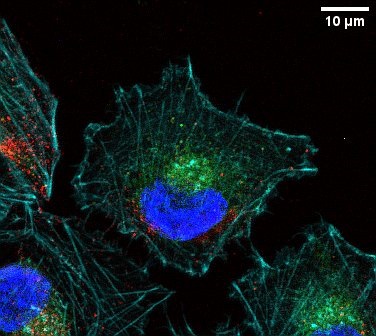The Role of Soil Viruses in Carbon Dynamics and Climate Mitigation

Soil viruses, often overlooked in ecological studies, play a critical role in shaping carbon dynamics within soil ecosystems. Recent research published in the *Pedosphere* on July 1, 2025, reveals that these microscopic entities significantly influence both the emission and sequestration of carbon, a crucial factor in the global fight against climate change.
The study, conducted by researchers from Zhejiang University in China and La Trobe University in Australia, explores the complex interactions between soil viruses and microbial communities, highlighting how these viruses impact the stability and mineralization of organic carbon in soils. According to Professor Jianming Xu, a leading expert in soil and environmental science at Zhejiang University, "This study is the first to demonstrate how soil viruses not only influence carbon release but also help to stabilize carbon through mineral-binding processes. Our findings suggest a more complex role for viruses in soil ecosystems, one that could have significant implications for climate change mitigation strategies."
Soils are recognized as major carbon sinks, storing more than twice the amount of organic carbon compared to vegetation biomass and atmospheric carbon combined. As climate change intensifies, understanding the mechanisms governing soil carbon dynamics is paramount. Viruses influence microbial communities, which are essential for carbon cycling, yet research on the impact of viruses on carbon retention and loss has been limited.
The recent study indicates that soil viruses can both stimulate and inhibit carbon dioxide (CO2) emissions, depending on their interaction with microbial processes. The researchers found that viral lysis, the process by which viruses infect and destroy microbial cells, leads to a shift in microbial biomass that can enhance soil's carbon storage capacity. This dual role of viruses—promoting carbon sequestration while also potentially releasing CO2—introduces a new dimension to soil carbon management.
The experimental design involved introducing soil viruses into sterilized samples from diverse regions, including forest and agricultural lands in China. The results demonstrated that viral presence increased microbial activity in certain soil types, enhancing the accumulation of recalcitrant organic matter, such as dissolved organic matter (DOM) and mineral-associated organic carbon. These forms of carbon are crucial for long-term storage and contribute significantly to soil health and fertility.
In addition to carbon cycling, the study also uncovered the influence of soil viruses on nitrogen cycling, suggesting a viral 'shuttle' process that connects carbon and nitrogen dynamics. This finding underscores the intricate relationships between different biogeochemical cycles in soil ecosystems.
Dr. Sarah Johnson, an environmental microbiologist at Stanford University, notes, "The implications of these findings are profound. As we seek to develop strategies for enhancing soil carbon sinks to combat climate change, understanding the role of soil viruses could lead to innovative approaches that harness these microbial interactions."
As the global community grapples with the escalating impacts of climate change, the insights from this study highlight the need for further research into soil microbiomes, particularly the viral components. Expanding our understanding of how viruses affect carbon dynamics may open new avenues for sustainable agricultural practices and effective climate change mitigation strategies. Future studies should focus on the effects of viral processes across various soil types and ecosystems to fully elucidate their potential in enhancing soil carbon sequestration.
This research was supported by the National Key R&D Program of China and other local science and technology initiatives, indicating a strong commitment to advancing our knowledge in soil science and environmental sustainability. The findings emphasize the importance of an integrated approach to soil management, recognizing the multifaceted roles that microorganisms, including viruses, play in maintaining soil health and addressing climate challenges.
Advertisement
Tags
Advertisement





